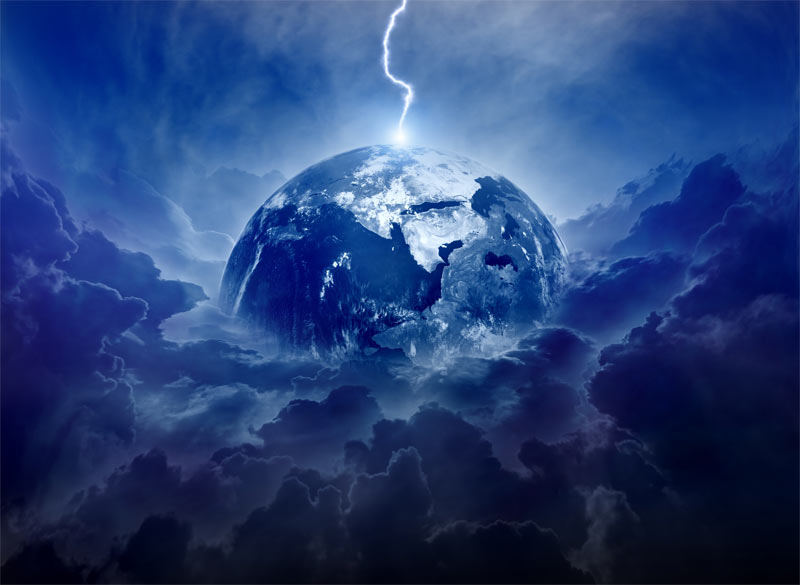Nothing is a given. Evolution could have had an entirely different outcome. However, since it turned out the way it did, maybe we have to analyze changes that affect each outcome in life. The natural and human-made challenges that have befallen Earth (such as ice ages, collisions with asteroids, earthquakes, wars) all played a role in life as we know it.
That being said, it is important to look at life from several perspectives. Geological forces affect environments, in turn, environments give form to organisms.
Our search must include a wider scope. Understand the greater forces influencing the forces visible to the naked eye. Do cosmic events, and the solar systems affect our planet? Are stars literally the reason we are here?
Have you ever heard the hypothesis of dinosaurs being driven to extinction by the gigantic meteorite impact 66 million years ago? Proposed by physicist Luis Alvarez, his geologist son Walter and coworkers in 1980, this hypothesis is just one example of the evolutionary shift.
The team unearthed sedimentary rocks laid worldwide at the time of the extinction. The rocks contained high levels of Iridium. A plausible explanation was that Iridium came from the dusty debris of a meteorite that collided with the earth. Other than earth, Iridium is found I abundance on asteroids.
This dramatic event bore significance on evolutionary history. The cause of dinosaur extinction remains a debate with so many possibilities.
An earth-meteorite collision’s energy could have triggered wildfires. Thus researchers approximate that the meteorite could have been 10km (6 miles) to release such amounts of Iridium. Impacts of such an impact could have released even more energy than a hydrogen bomb. Not to mention the dust and debris that was flung all over. It would have been enough to block the sun and send temperatures plunging for years.
In 1991, an impact crater was discovered in Chicxulub, Mexico, measuring 100 miles wide. This discovery, its geological age coinciding with the extinction, supported the hypothesis.
The extent to which the impact drove the dinosaurs remains unclear. Evidence suggests they were already on the brink. This discovery left a mark on evolutionary history and arose concerns about potentially devastating meteorite impacts today. On the other hand, there are other explanations for meteorite extinctions over 66 million years ago.
In March 2016, Japan Spaceguard Association researcher, Tokuhito Nimura, together with colleagues suggested that the extinctions, global cooling as well as iridium layer might have resulted when the Solar System passed through a molecular cloud. The accumulating dust would have formed a sunlight reflecting haze thus cooling the planet. There are several known ‘Mass Extinctions,’ many species worldwide seem to have died suddenly from the one 66 million years ago.
In 1975, British astronomer William McCrea suggested that is Earth passed through an interstellar ‘dust lane,’ it would result in an ice age. Instead, astronomers Martin Rees and Mitchell Begelman offered that such dust might affect the particle streaming path thus leave Earth exposed to high doses of radiation. This would have resulted in climate changes and extinctions.
Constructing from McCrea’s idea, Nimura argues that the Chicxulub impact might not have been as impactful as initially thought. According to astronomer Martin Beech, University of Regina, Canada; this is an interesting and plausible idea but just speculation—for now.
The biggest Mass Extinction was at the Permian period, 252 million years ago. Over 95% of Earthly life seemingly died. Present day life is a result of the remaining 4%. Surviving species always find a way of continuing life or die.
Paleontologists continuously argue about the reasons of Mass Extinctions. One possibility is that ecosystems work like the smaller-scale population crashes. Since life is interdependent, a change in one system results in a domino effect sending shockwaves through entire systems. Another possibility is that influences outside the living world are at play.
The Mass Extinction post the Triassic period resulted in the disappearance of half the Earthly species. It might have been caused by a meteorite impact or volcanic activity or even climate changes. Interestingly Mass Extinctions occur at regular intervals 26 million years apart.
It is possible that cosmic circumstances are the reason for the occurrence of catastrophic collisions.
More News To Read










